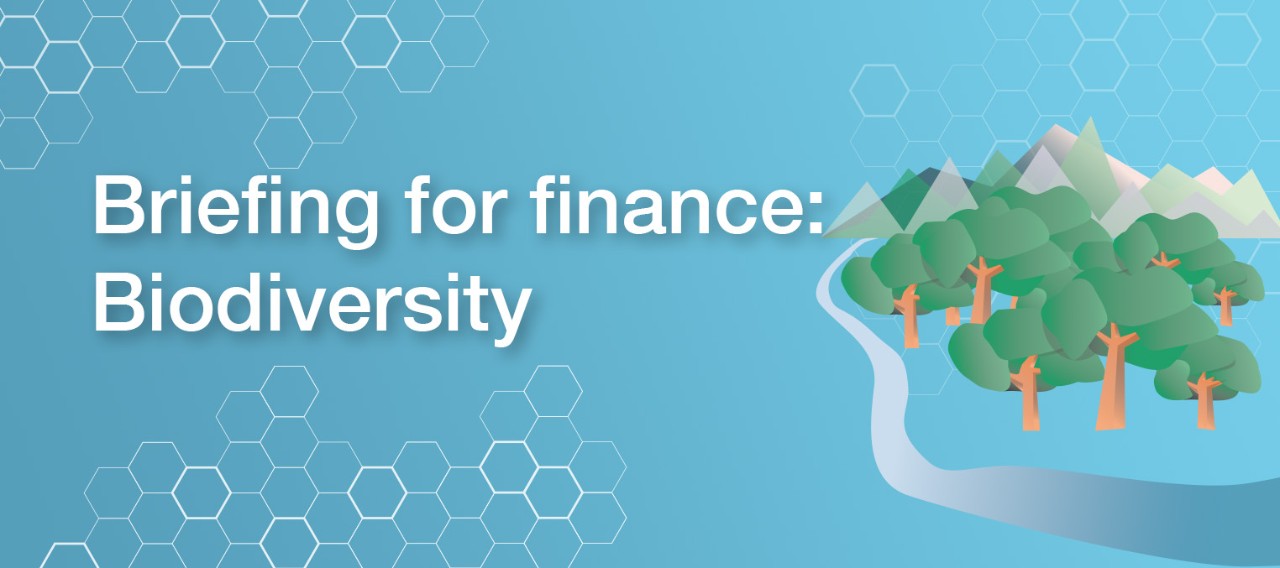Four actions finance teams can take on nature
Steps you can take towards nature positive outcomes based on the regeneration of nature, rather than its destruction are set out below. You can assess your progress against each of these areas and develop a roadmap for action using our maturity map.
1. ASSESS – MEASURE AND VALUE
- Understand your natural capital-related impacts, dependencies, risks and opportunities, over the short, medium and long term and at an appropriate level, eg entity / product / area. Identify interactions with key locations eg high-importance ecosystems or areas of water stress.
- Consider all relevant parts of your value chain – as with carbon, your most significant areas may be outside your direct operations.
- Identify information required by decision makers, including the most useful type of data which is likely to be a range of qualitative, quantitative and monetized information depending upon use, relevance and robustness of data available. This may vary depending on if the data is being used for internal or external reporting. Seek metrics and measurement frameworks that are consistent and comparable with financial capital where possible to allow for effective integration into management information.
- Consider the impacts of nature-related issues on the organization and the impacts of the organization on the natural world, and include a wide range of stakeholders to inform the assessment process.
Detailed guidance is available from the Natural Capital Protocol and from the Taskforce on Nature-related Financial Disclosures (TNFD).
2. COMMIT – SET TARGETS AND UPDATE GOVERNANCE
- Set transparent, time-bound and specific science-based targets for all material impacts and dependencies. During this process, ensure you understand your baseline.
- The board should actively consider and take responsibility for natural capital-related issues. This responsibility should filter down through the organization. For example, through incentivization schemes and budgeting processes.
- Build capacity as needed so that senior leadership and the finance team have necessary knowledge and skills in this area.
- Ensure that targets for nature and climate align, and make sure that you understand any trade-offs.
Detailed guidance is available from the Science Based Targets Network.
3 TRANSFORM – UPDATE DECISION MAKING, STRATEGY AND BUSINESS MODELS
- Adapt your decision-making processes to include natural capital information alongside financial and other capitals as part of an integrated capitals approach.
- Integrate natural capital-related impacts, dependencies, risks and opportunities into your overall strategy and risk management and alongside other capitals, including use of scenario planning. Include natural capital in risk appetite statements.
- Advocate for action to reverse loss of natural capital both at a sector and national level, and collaborate with peers and other stakeholders to achieve change, including within your value chain.
Explore the A4S Essential Guide series to identify more tools and approaches you can adopt that will help you embed natural capital into decision making.
4 DISCLOSE – PUBLISH INFORMATION FOR INVESTORS AND WIDER STAKEHOLDERS
- Include natural capital disclosures in your annual report and accounts in line with the latest recommendations from the Taskforce on Nature-related Financial Disclosures (TNFD). At COP15 countries agreed to require all large and transnational companies and financial institutions to transparently disclose their risks, dependencies and impacts on biodiversity across their operations, supply and value chains, and portfolios by 2030.
- Follow the recommendations in GRI's Biodiversity Standard.
- Undertake verification or assurance of material disclosures.




